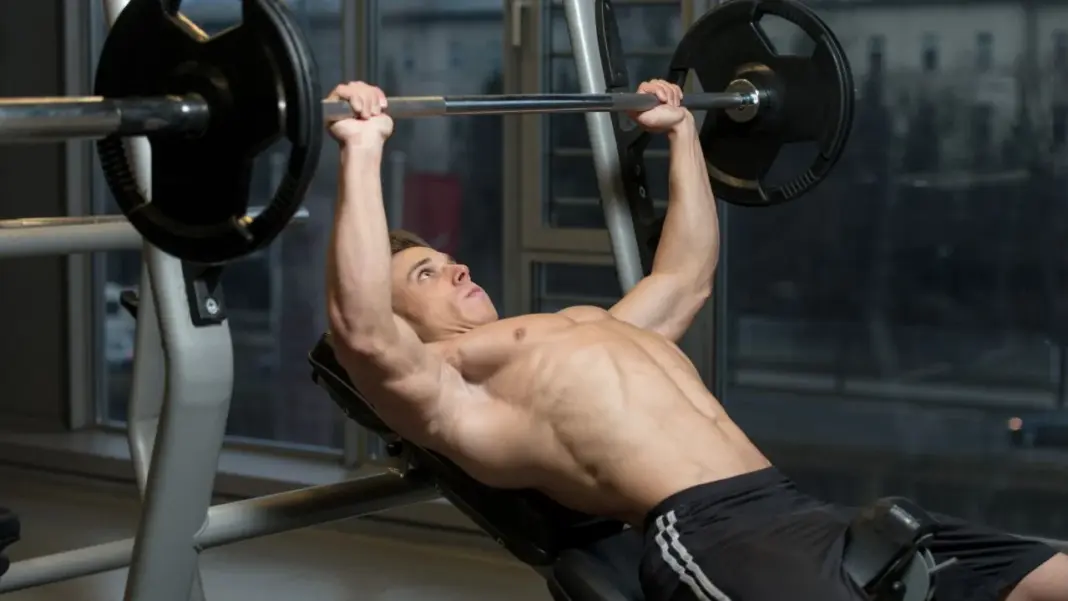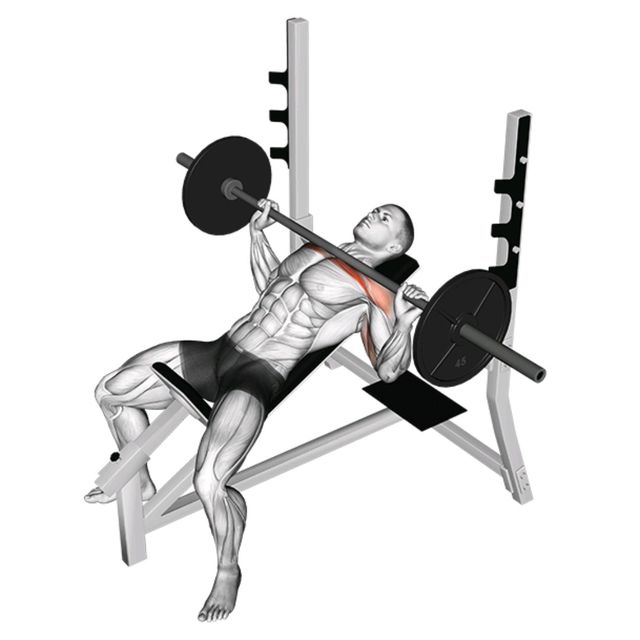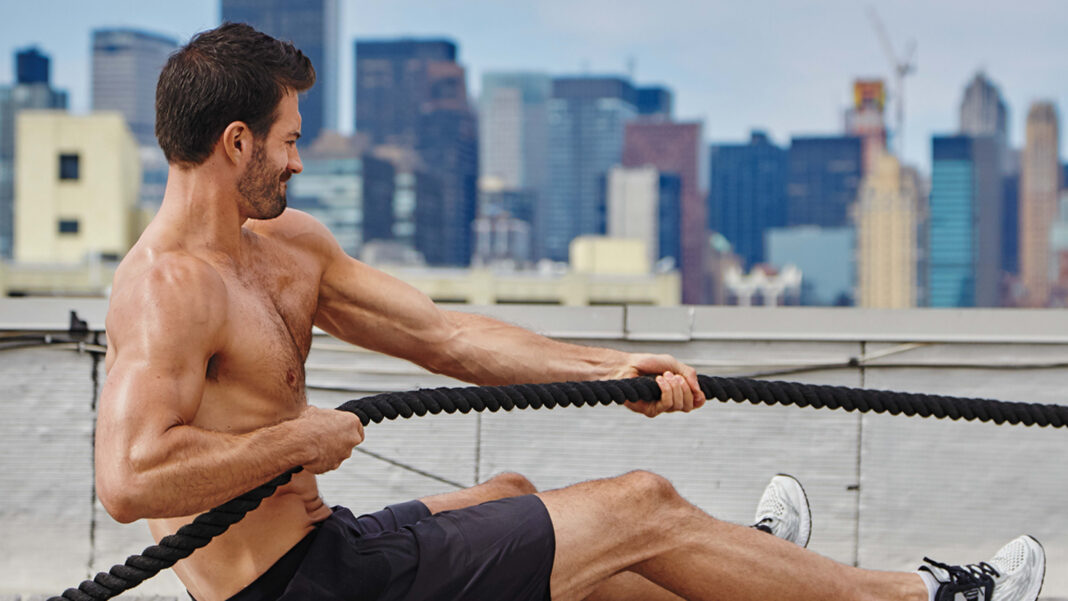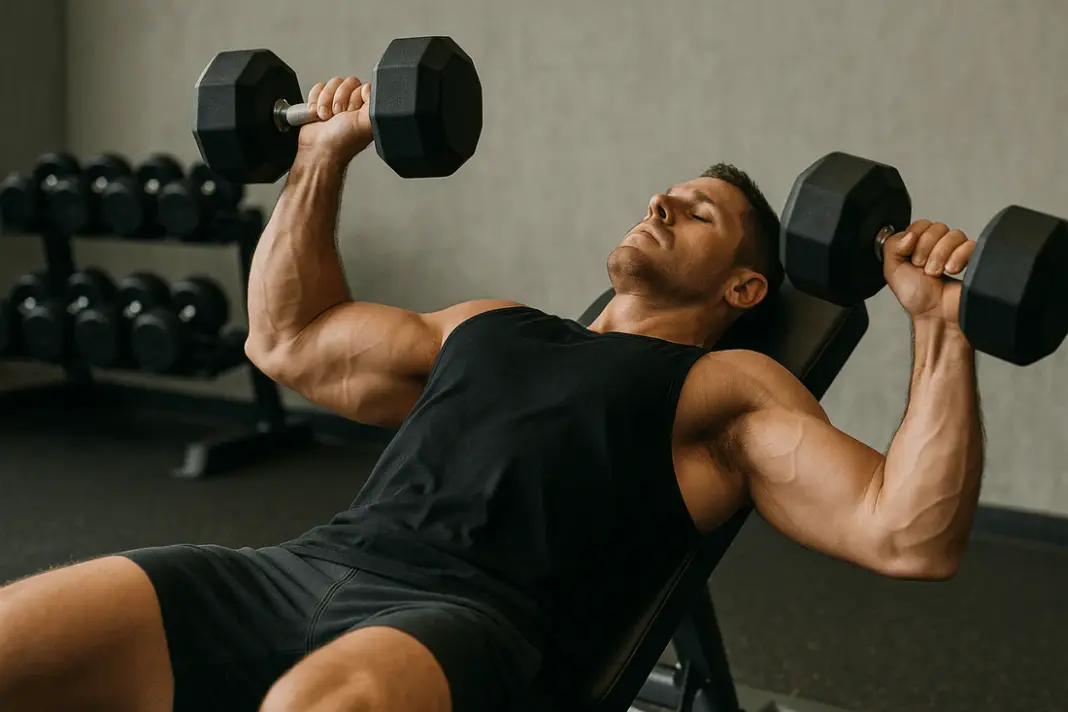Incline Barbell Bench Press: The Cornerstone of Upper Chest Development
If there’s one exercise that defines the upper chest in bodybuilding — it’s the Incline Barbell Bench Press.
This movement doesn’t just add muscle; it adds shape, height, and density to the clavicular head of the pectoralis major.
For physique athletes and serious lifters alike, it’s the upper chest builder that gives the torso its sculpted, armor-plated look.
While the flat bench is the undisputed king of pressing strength, the incline barbell press is what creates that upper shelf — the full, lifted appearance that completes the aesthetic flow from chest to shoulders.
Whether you’re chasing competition-ready symmetry or pure strength, understanding how to master this movement is non-negotiable.
Muscles Worked
The Incline Barbell Bench Press primarily targets the clavicular (upper) head of the pectoralis major, but it also recruits a strong supporting cast:
- Primary Muscle: Upper Pectoralis Major (clavicular head)
- Secondary Muscles:
- Anterior Deltoids (front shoulders)
- Triceps Brachii (elbow extension)
- Serratus Anterior and Rotator Cuff (stabilization)
- Core and Upper Back (scapular support and balance)
This blend of pressing power and stabilizer engagement makes the incline bench one of the most complete upper-body builders in a bodybuilder’s arsenal.
The Setup
- Bench Angle:
Set the bench at a 30–45° incline. Anything higher shifts the emphasis toward the shoulders, while anything lower starts to resemble a flat press. Most lifters find the sweet spot around 35°. - Barbell Height:
Position the barbell just above eye level when you’re lying down. This allows for a smooth unrack without losing shoulder position. - Grip Width:
Use a medium grip — slightly wider than shoulder-width. A narrow grip increases triceps involvement, while an overly wide grip reduces upper pec activation. - Body Positioning:
- Retract and depress your shoulder blades (pull them down and back).
- Keep your chest high and feet planted firmly.
- Maintain a slight arch in your lower back without lifting your glutes.
How to Perform the Incline Barbell Bench Press
- Unrack with Control:
Take a deep breath, brace your core, and unrack the barbell by extending your elbows — not shrugging your shoulders. The bar should be over your upper chest line, not your neck. - Lowering Phase (Eccentric):
- Lower the bar slowly to the upper chest, just below the collarbones.
- Keep your elbows at about a 45° angle from your torso — not flared out or tucked excessively.
- Feel the stretch across your upper pecs; this is where growth starts.
- Pressing Phase (Concentric):
- Drive the bar upward explosively while maintaining control.
- Push slightly up and back, following a natural arc.
- Squeeze your chest at the top — imagine pulling your biceps together in front of you.
- Breathing:
- Inhale deeply before lowering.
- Exhale forcefully as you press the bar upward.
Training Strategies & Variations
- Strength Focus (Performance-Oriented Bodybuilders)
If you’re chasing upper-body pressing power:
- Reps/Sets: 4–6 sets of 4–6 reps
- Rest: 2–3 minutes between sets
- Load: 75–85% of your 1RM
- Goal: Build progressive overload and neurological efficiency
Pair with Flat Bench or Overhead Press in alternating sessions to develop total pressing balance.
- Hypertrophy Focus (Aesthetics & Muscle Density)
To sculpt and fill out the upper chest:
- Reps/Sets: 3–4 sets of 8–12 reps
- Rest: 60–90 seconds
- Tempo: 3-second eccentric, 1-second squeeze at the top
- Goal: Time under tension — maximizing fiber recruitment and blood flow
Use dumbbells or cables for accessory movements afterward to complement the barbell’s heavy stimulus with isolation work.
- Hybrid (Periodized Approach)
For advanced bodybuilders who want the best of both worlds:
- Alternate between heavy incline barbell weeks (low reps, heavy load) and moderate-load, high-tension weeks (higher reps, controlled tempo).
- Rotate incline angle every few weeks — small adjustments (30°, 35°, 40°) hit slightly different fibers.
Common Mistakes & How to Fix Them
- Using Too High an Incline
- Mistake: Setting the bench above 50° turns the lift into a shoulder press.
- Fix: Keep it between 30–45°, focusing on pec activation over deltoid dominance.
- Flaring the Elbows
- Mistake: Pushing with elbows too far out strains the shoulder joint.
- Fix: Keep elbows at roughly a 45° angle to the torso — think “tuck and press.”
- Bouncing the Bar off the Chest
- Mistake: Using momentum instead of muscle tension.
- Fix: Pause slightly at the bottom to maintain control and prevent joint stress.
- Short Range of Motion
- Mistake: Not lowering the bar fully reduces upper chest activation.
- Fix: Bring the bar down to just above the collarbone — full stretch equals full growth.
- Losing Shoulder Stability
- Mistake: Shrugging during the press disengages the chest.
- Fix: Keep your shoulder blades locked down and back throughout.
Bodybuilder’s Technique Cues
✅ “Lead with the chest, not the arms.”
✅ “Pull the bar down — don’t just drop it.”
✅ “Push through your upper chest fibers — not your shoulders.”
✅ “Squeeze the bar hard to stabilize your upper body.”
✅ “Visualize driving your biceps together at the top of the press.”
These cues help maximize mind–muscle connection, ensuring the pecs remain the prime movers.
Programming the Incline Barbell Bench Press
For physique-focused athletes, placement and frequency matter.
Here’s how to integrate it effectively:
- Frequency: 1–2 times per week
- Position: Early in the session (first or second exercise)
- Pair With:
- For strength → Overhead Press, Flat Bench Press
- For hypertrophy → Incline Dumbbell Flyes, Low-to-High Cable Flyes
Example Upper Chest Hypertrophy Routine:
- Incline Barbell Bench Press – 4×8
- Incline Dumbbell Fly – 3×10–12
- Low-to-High Cable Fly – 3×12–15
- Seated Arnold Press – 3×10
This structure builds volume and intensity while keeping shoulder health in check.
Advanced Variations
- Paused Incline Bench Press:
Add a 1–2 second pause at the bottom to increase time under tension and eliminate bounce. - Reverse-Grip Incline Press:
Shifts even more emphasis to the upper chest while reducing front delt involvement. - Smith Machine Incline Press:
Great for strict form, steady tempo, and high-rep hypertrophy work. - Incline Cluster Sets:
Perform 4–6 mini-sets of 2–3 reps with 15-second breaks to maintain high intensity and mechanical tension.
Safety and Shoulder Health
Because the incline press involves the shoulder joint at a challenging angle, proper prehab and mobility are essential:
- Warm up with band pull-aparts, face pulls, and light cable flyes.
- Keep the shoulders mobile but stable — avoid overstretching under load.
- Don’t neglect your rear delts and rotator cuff — they’re your pressing insurance.
Bodybuilder’s Insight
When you watch great physiques — think Arnold, Coleman, or Heath — notice the upper chest. It’s elevated, full, and creates that deep separation line across the clavicle. That look isn’t built by flat pressing alone; it’s forged under an incline bar.
This movement rewards precision and patience. It’s not just about moving heavy weight — it’s about controlling every inch of the rep, maintaining chest tension, and feeling the fibers stretch and contract with intent.
Think of it this way:
Flat bench builds mass; incline bench sculpts dominance.
Practical Takeaways
- Use a 30–45° incline for optimal upper chest targeting.
- Keep the elbows at a 45° angle — no flaring.
- Prioritize time under tension and full range of motion.
- Incorporate progressive overload — track weight, tempo, and control.
- Pair with fly variations for complete upper chest activation.
- Maintain shoulder health through balanced posterior chain work.
Conclusion
The Incline Barbell Bench Press is more than just a variation — it’s the upper chest cornerstone that defines a balanced, powerful physique. When executed with precision, it bridges strength and aesthetics, building that full, carved look from clavicle to pec line.
Train it with intent. Press with control. Build your chest like a sculptor shapes marble — deliberate, disciplined, and strong.





